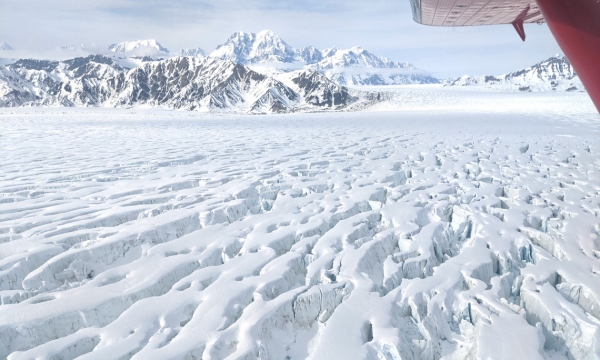Mapping a large coastal glacier in Alaska revealed that its bulk sits below sea level and is undercut by channels, making it vulnerable to accelerated melting in an already deteriorating coastal habitat.
A detailed "body scan" of Malaspina Glacier, one of Alaska's most iconic glaciers, revealed that its bulk lies below sea level and is undercut by channels that may allow ocean water to gain access, should its coastal barrier erode. This makes the glacier more vulnerable to seawater intrusion than previously thought and may cause it to retreat faster than predicted.
The findings, published by University of Arizona researchers in the Journal of Geophysical Research, underscore the fragility of a very large glacial system that could lead to the loss of a significant volume of ice and National Park Service land and would contribute a measurable volume to global sea level rise.
"The loss of this glacier would likely be the largest loss of ice from an Alaskan glacier within this century," said lead study author Brandon Tober, a doctoral student in the UArizona Department of Geosciences.
Read more at University of Arizona
Image: Located in southeast Alaska, Malaspina Glacier spills out from the St. Elias Mountains onto the coastal plain as a "pancake of ice". New research revealed certain features make the glacier particularly vulnerable to melting. (Credit: Brandon Tober via University of Arizona)


